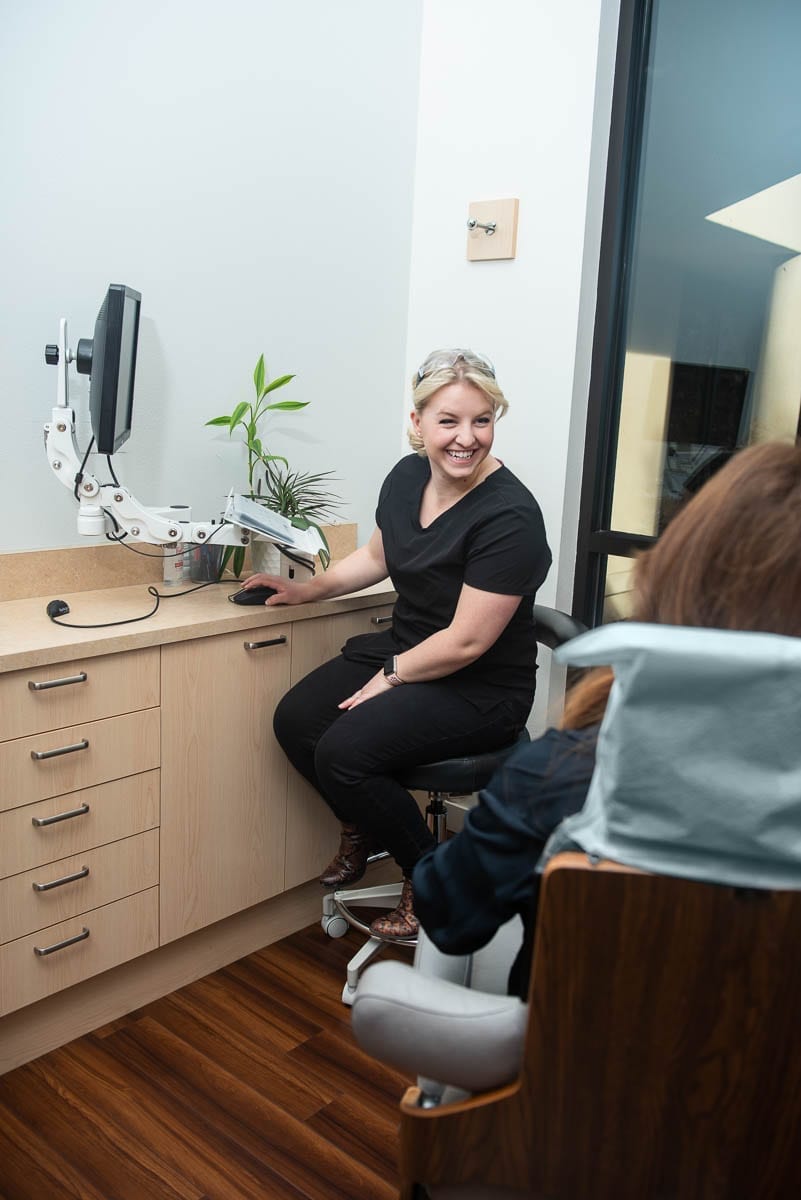DENTAL EXTRACTIONS in Bend, OR
DENTAL EXTRACTION in bend, ORegon?
You and Dr. Andrew Engel may determine that you need a tooth extraction for any number of reasons. Some teeth are extracted because they are severely decayed. Others may have advanced periodontal disease or are broken in a way that cannot be repaired. Other teeth may need removal because they are poorly positioned in the mouth (such as impacted teeth) or in preparation for orthodontic treatment.
The removal of a single tooth can lead to problems related to your chewing ability, problems with your jaw joint, and shifting teeth, which can have a major impact on your dental health.
To avoid these complications, Dr. Andrew Engel will discuss alternatives to extractions as well replacement of the extracted tooth.

THE DENTAL EXTRACTION PROCESS
At the time of extraction, the doctor will need to numb your tooth, jawbone, and gums that surround the area with a local anesthetic.
During the extraction process, you will feel a lot of pressure. This is from the process of firmly rocking the tooth in order to widen the socket for removal.
You feel the pressure without pain as the anesthetic has numbed the nerves stopping the transference of pain, yet the nerves that transmit pressure are not profoundly affected.
If you do feel pain at any time during the extraction, please let us know right away.
SECTIONING A TOOTH
Some teeth require sectioning. This is a very common procedure done when a tooth is so firmly anchored in its socket or the root is curved and the socket can’t expand enough to remove it. The doctor simply cuts the tooth into sections then removes each section one at a time.

AFTER CARE
BLEEDING:
Some bleeding may occur. Placing a piece of moist gauze over the empty tooth socket and biting down firmly for 30 minutes can control this.
BLOOD CLOTS THAT FORM IN THE EMPTY SOCKET:
This is an important part of the healing process and you must be careful not to dislodge the clot.
Avoid rinsing or spitting for 24 hours after the extraction.
Avoid the use of a straw, smoking, or drinking hot liquids.
SWELLING:
If swelling occurs, you can place ice on your face for ten minutes and off for 20 minutes. Repeat this cycle as you feel necessary for up to 24 hours.
PAIN & MEDICATIONS:
If you experience pain, you might use non-prescription pain relief medications such as acetaminophen or ibuprofen.
EATING:
For most extractions, make sure you do your chewing away from the extraction site. Stay away from hot liquids and alcoholic beverages for 24 hours. A liquid diet may be recommended for 24 hours.
BRUSHING & CLEANING:
After the extraction, avoid brushing the teeth near the extraction site for one day. After that, you can resume gentle cleaning. Avoid commercial mouth rinses, as they tend to irritate the extraction site.
Beginning 24 hours after the extraction, you can rinse with salt water (one teaspoon salt in a cup of warm water) after meals and before bed.
DRY SOCKET:
Dry socket is when a blood clot fails to form in the socket where the tooth has been extracted or the clot has been dislodged and the healing is significantly delayed.
Following the post-operative extraction instructions will reduce the chances of developing dry socket. Dry sockets manifest themselves as a dull throbbing pain that usually doesn’t appear until three to four days after the extraction. The pain can be moderate to severe and radiate from the extraction area. Dry socket may cause a bad taste or bad breath and the extraction site appears dry.
Dr. Andrew Engel will apply a medicated dressing to the dry socket to soothe the pain.

HEALING:
After a tooth has been extracted, there will be a resulting hole in your jawbone where the tooth was. In time, this will smooth and fill in with bone. This process can take many weeks or months. However, after one to two weeks you should no longer notice any inconvenience.
Tooth Extraction post operative instructions can be found here on our website.
INSURANCE, FINANCING AND OUR IN-OFFICE DENTAL PLAN
We believe that everyone has a right to the very best health care. And we believe that a healthy mouth is indicative of a healthy body.
DON’T COMPROMISE YOUR DENTAL CARE. CHOOSE A DENTIST YOU CAN TRUST, REGARDLESS OF INSURANCE.
At Living Dental Health, we are pleased to be in-network with a variety of dental insurance plans. If your dental plan is not one we are in-network for, we can still provide the same excellent services out-of-network. If you don’t see your plan below, give us a call to determine if your family’s treatments are covered.
Payment is due at the time of service unless other arrangements have been made in advance. If you have questions, we are happy to provide clarification. Also, we accept most major credit cards and offer financing through CareCredit as well as an in-office dental plan.
NO INSURANCE? NO PROBLEM!
We are also delighted to offer an in-office dental plan. The plans available range from traditional dental services to include dental cleanings and an exam to more comprehensive dental care for those with conditions that require more frequent visits. Call our office to learn more about the dental plans at Living Dental Health.
